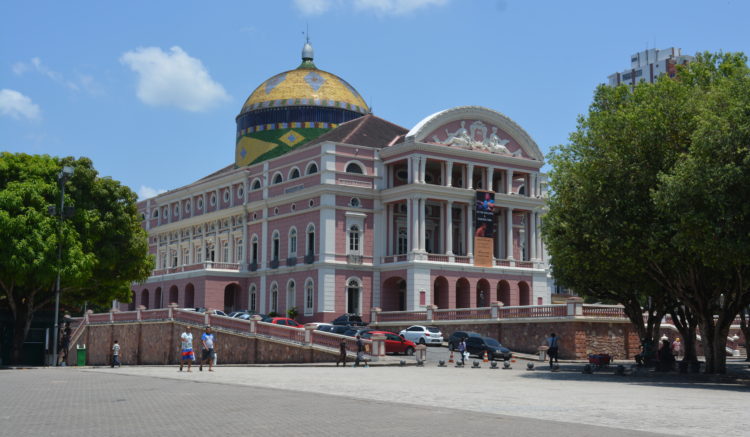Manaus is one of those iconic places in all school geography books and lies over a 1,000 kilometres from Leticia / Tabatinga and a further 1,000 kilometres from Belém which sits at the mouth of the Amazon. It really is in the centre of the Amazon basin. The only way to get to Manaus from the rest of Brazil is either by plane or river boat, there are no roads that connect Manaus to the main population centres in Brazil, the only roads go North to Boa Vista and Guyana and Venezuela.

Manaus sits just upstream on the Rio Negro a few kilometres before it joins the Amazon. The river at Manaus is already some two or more kilometres wide and being so wide has the characteristics of a sea, with waves whipped up by the winds and currents. The river in places is up to 100 metres deep and is able to cater for large ocean going ships that have facilitated the boom in rubber and more recently all sorts of agribusinesses that make use of the climate and abundant water.
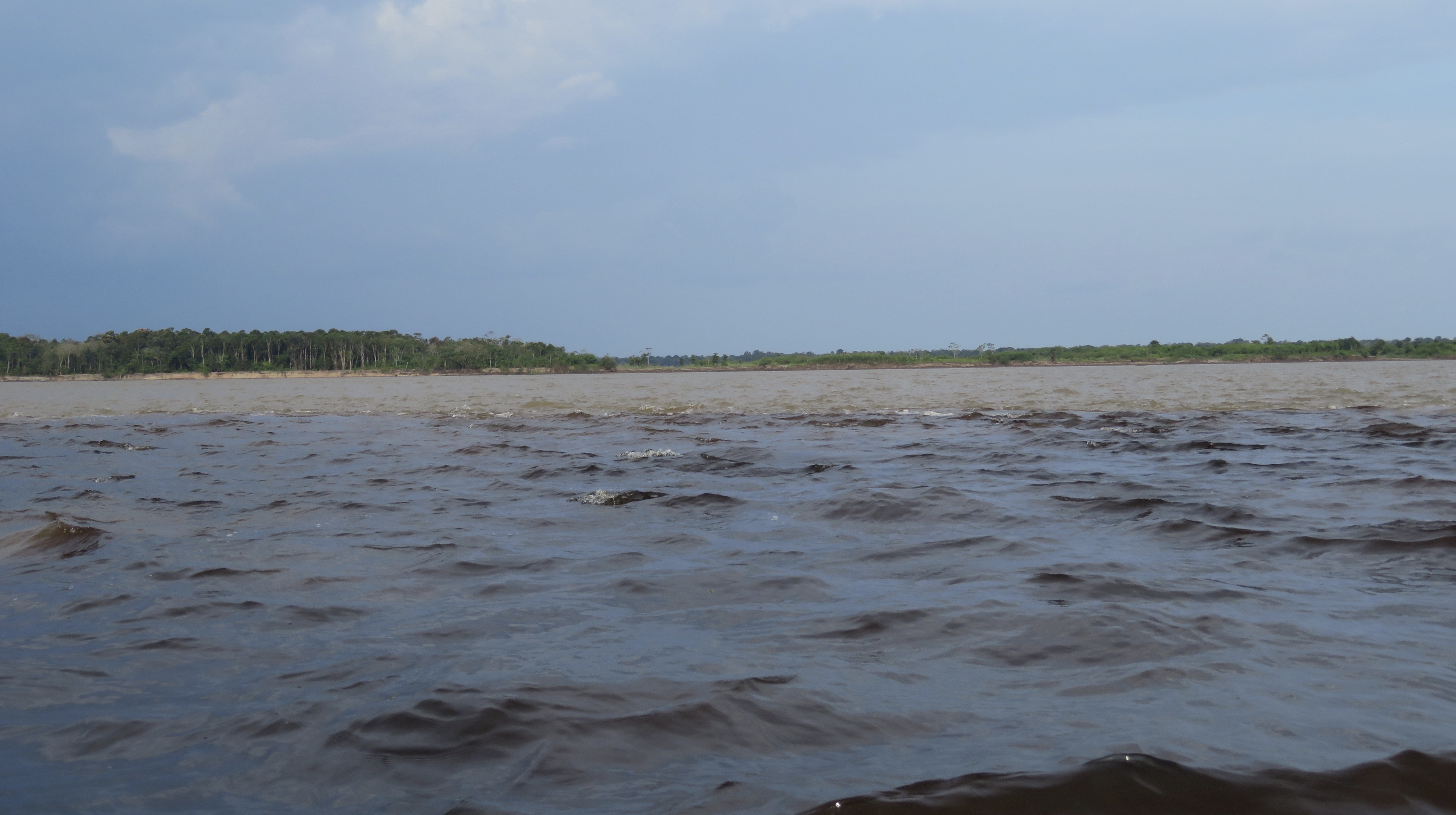
The meeting of the waters between the dark Rio Negro and the more grey Amazon is an interesting phenomena of nature where by the two distinctive streams of water flow in parallel with each other and not mixing for several kilometres further down stream. The Rio Negro rises in Colombia and largely flows through rain forest so gets its dark colour from rotting vegetation. The Amazon rises further upstream in the Andes of Peru and thus contains many sediments from those mountains, hence its much lighter colour.

Manaus is an enormous city of over two million people and has grown up as a major trading centre based of the resources of the Amazon. Like many Brazilian cities most of the population live in large condominiums on the outside of the historical city centre, complete with large motorways and shiny shopping malls. The old city centre has a number of major markets selling all sorts of fish, fruit and other foodstuffs adjacent to the many docks that line the river front. During the day this is a major hive of economic activity, though at night the area is much less safe with a number of homeless and people on the margins of society.
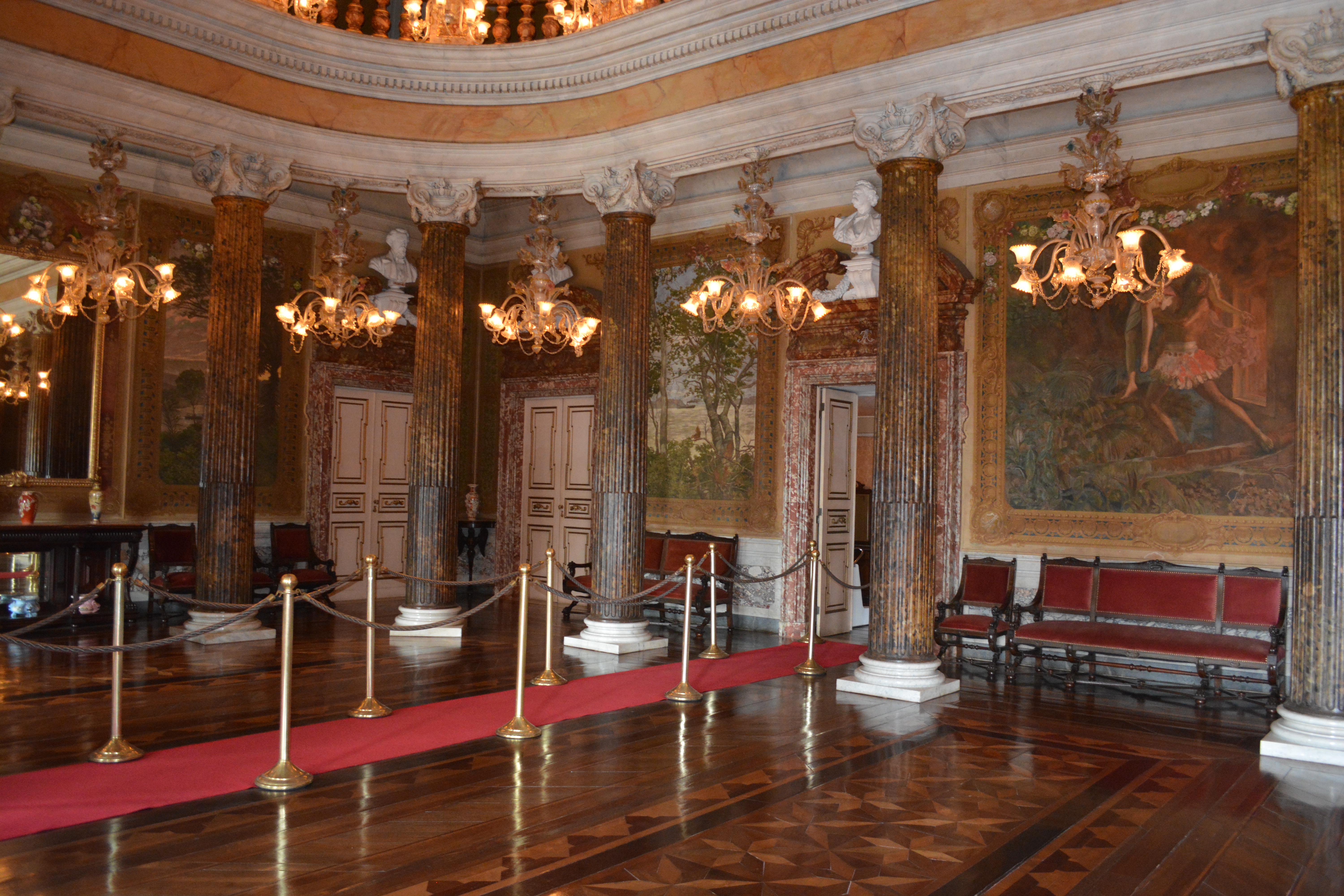
Manaus’ architectural centre piece the the Teatro Amazonas, which was built at the height of the rubber boom around the turn of the last century. It is a remarkable building, if somewhat slightly incongruous as one of the last places you’d expect to find an elegant opera house / theatre is in the middle of the jungle. The theatre has been lovingly restored and is a permanent reminder of the ambition of the original pioneers who founded the city and made it the success it is today.
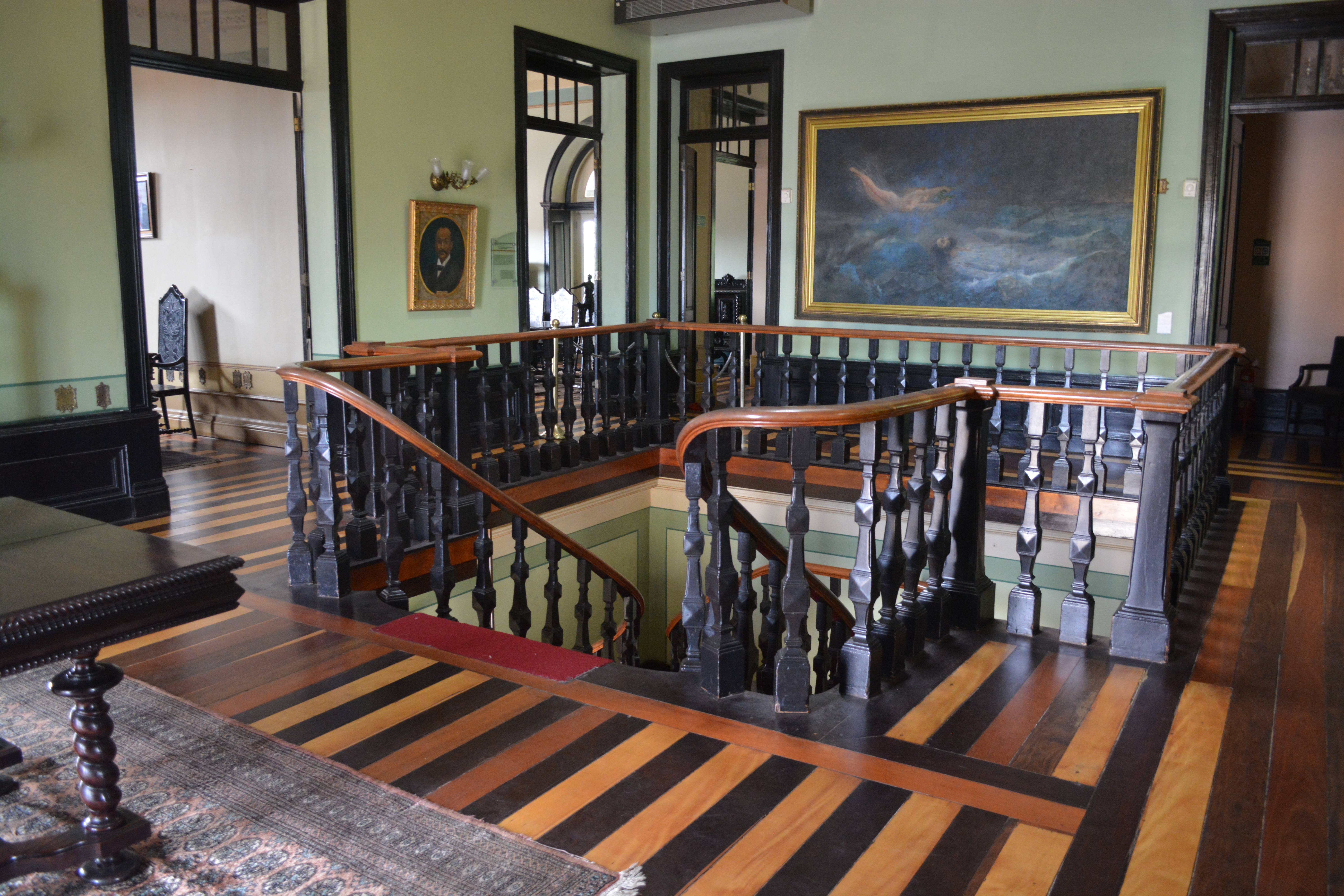
Almost as impressive is the old Governors House, which is similar to the ones of the original coffee barons we saw in Sao Paolo at the start of our journey. The furniture and balconies are impressive, but what really takes the breath away is the wooden flooring and the grand staircase. The floor consists of three different contrasting colours of local wood, light and dark, and with its polish makes a spectacular statement of wealth.
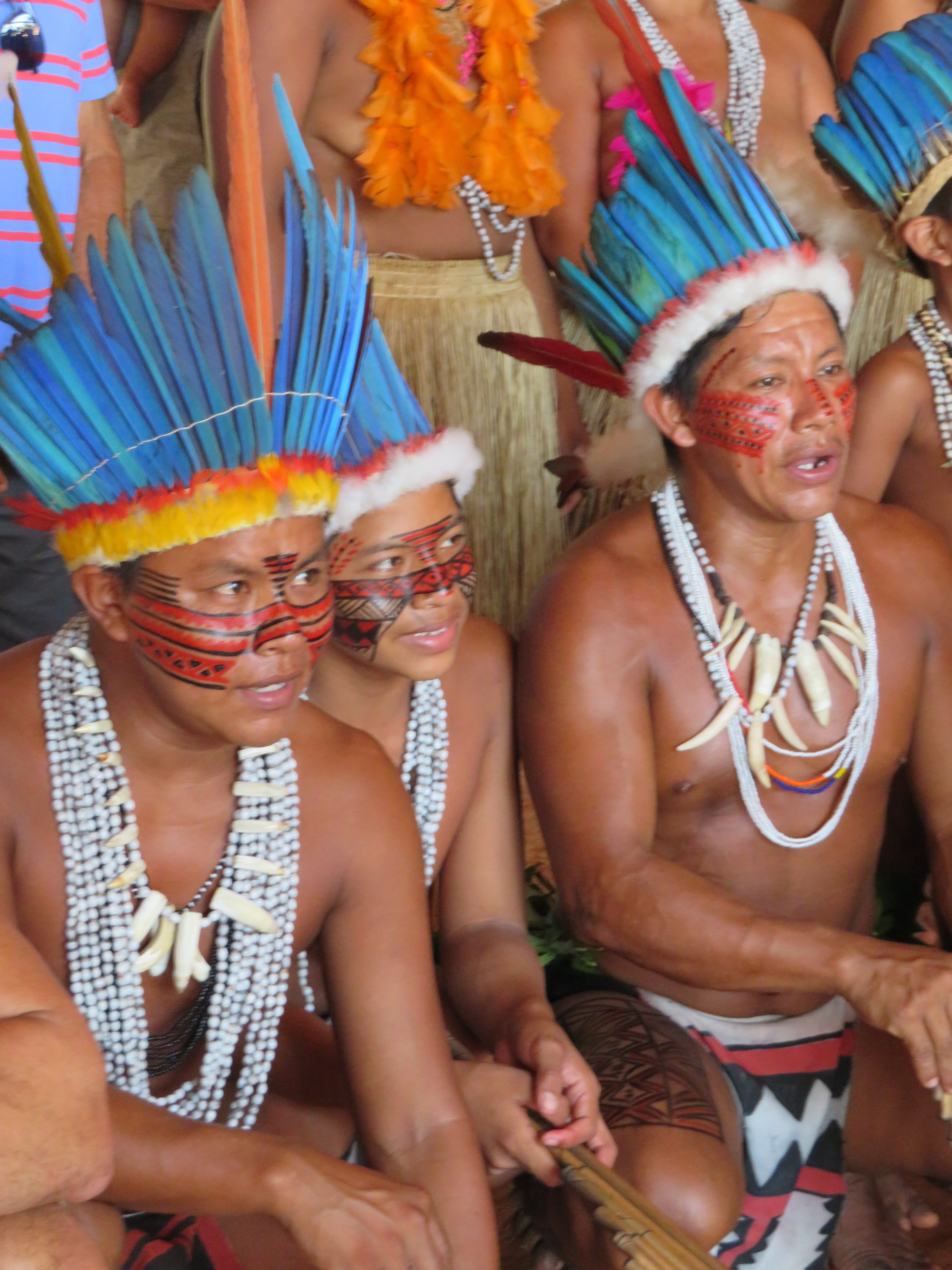
With the city being so large, it takes some time to escape into the surrounding jungle. To really understand and appreciate the city, the best trip to take is one on the river, as it offers an unprecedented insight into the city and its surrounding area. The trip we took went upstream on the Rio Negro and under the recently built bridge over the Rio Negro to some indigenous communities who put on some dancing displays for the tourists, principally Brazilian, to earn some hard cash to preserve what they can of their traditions. The river has a number of sandy beaches, which vary in size depending on the season and thus the height of the river – it can vary up to 14 metres depending on the season. Pink Amazon river dolphins also live in the area and in places they are fed to encourage them to swim near some specific areas of the river. Like dolphins the world over these large mammals have a permanent smile and their nature inevitably rubs off on most visitors.
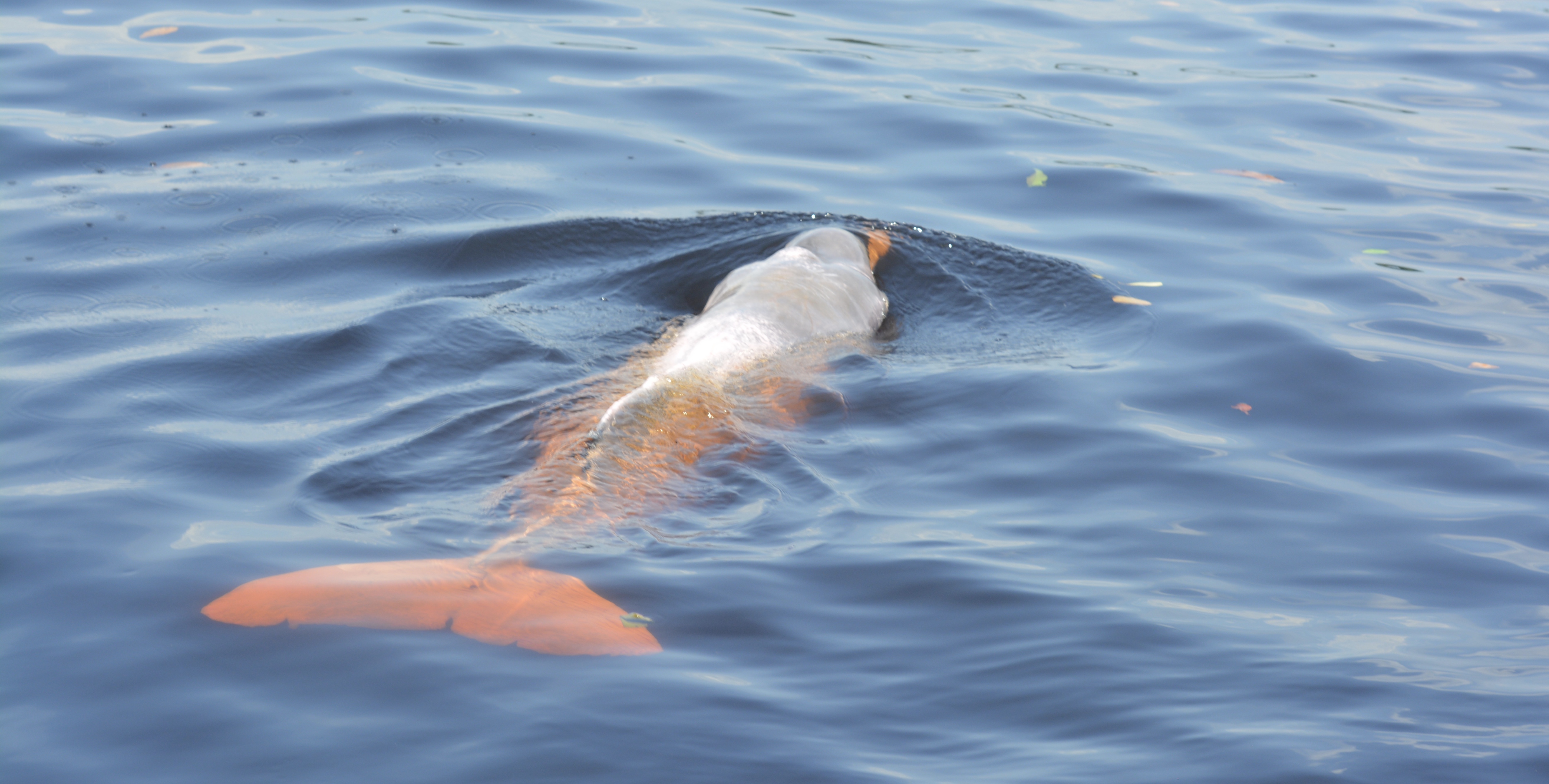
In addition to numerous birds and fishes, the other main mammal that is regularly visible are the playful monkeys. These cheeky animals live near many of the human settlements and look for easy food. Indeed we witnessed one chap take a banana out of one unsuspecting tourist’s bag and then expertly peel and eat it.

By the meeting of the rivers and on the river banks to the East of the city are many ocean going container ships and tankers. To see such large ships over a thousand kilometres from the sea really makes you appreciate just how large and vast the Amazon is. Later on our journey we will visit both Belem and Macapá on the mouth of the Amazon, thus hopefully getting a good insight into the river. The Amazon river ferries take around four days from Belém on the Atlantic Ocean to Manaus and a further four days to Leticia, making it a very long journey to undertake and appreciate all the more how impressive the early settlers and merchants were in opening up the interior of Brazil and founding Manaus.
Date: 22/09/2018 to 26/09/2018
